'Sitters and Standers' gives a glimpse into the gap between desk workers and those who work standing up

In the United States, the 'right to sit' has been
Sitters and Standers
https://pudding.cool/2024/11/sitters-standers/

Access the above URL and click 'Start' immediately.

You will be asked how much time you spend standing during the day, so choose the percentage you want and click 'Next'.
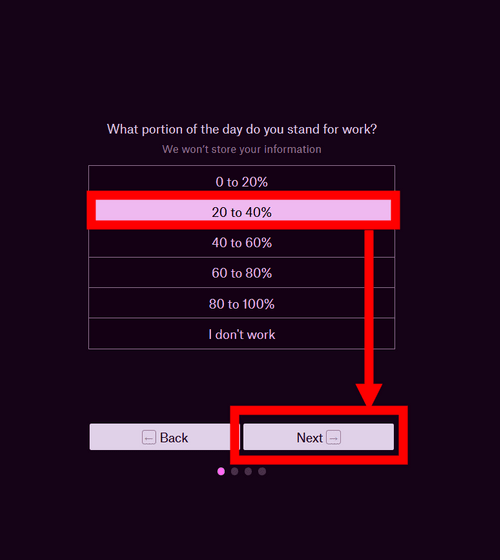
From the top down, you will be presented with the options of 'crouching,' 'climbing ladders,' 'being outdoors,' 'exposure to moisture or liquids,' 'exposure to extreme heat,' and 'exposure to dangerous pollutants' while working. Select the appropriate option, or if not, leave it blank and click 'Next.'

From the top down, you will be asked whether your job allows you to pause, allows you to work remotely, allows you to solve problems every day, allows you to choose whether to sit or stand, and requires a bachelor's degree. If any of the following apply to you, select them and click 'Next.'
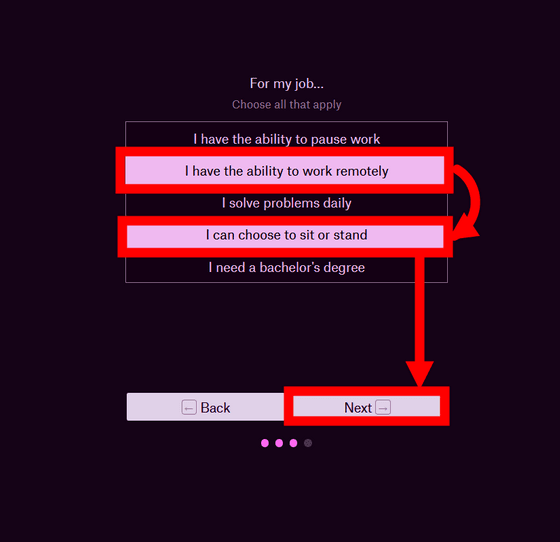
When asked how much I earn, I chose 'I don't want to answer.' The site does not store user information. Select one and click 'Next.'

This is the main content of sitters and standers, where American workers are represented by rectangles. For example, this rectangle is a laundry worker. From now on, unless otherwise noted, click 'Next' at the bottom right to move to the next page.

On the left side of the screen are 'sitters' who work while sitting, and on the right side are 'standers' who work while standing, and laundry work falls into the standing category.

The sitters on the left include software developers, etc.
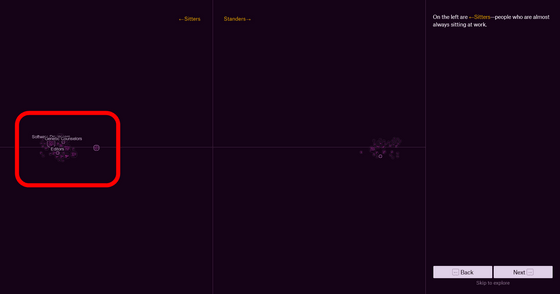
The position of your job that you answered in the previous question is plotted under 'YOU.'
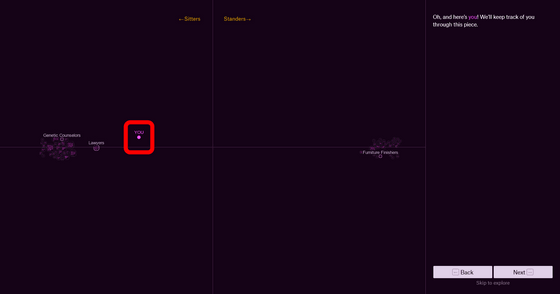
In addition, various tasks are plotted. You can zoom in and out by using the mouse wheel or pinching in and out.
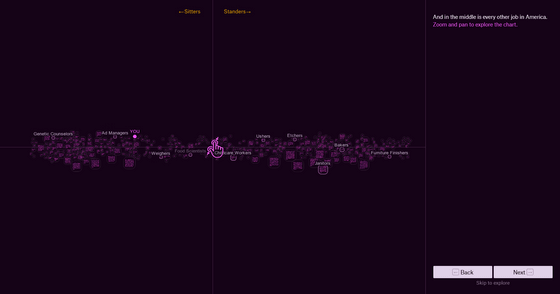
Over the past few decades, American jobs have slowly become less physically demanding, with many agricultural and factory jobs being replaced by desk work. But there are still many people who work in physically demanding jobs. To find out, Sitters and Standers analyzed
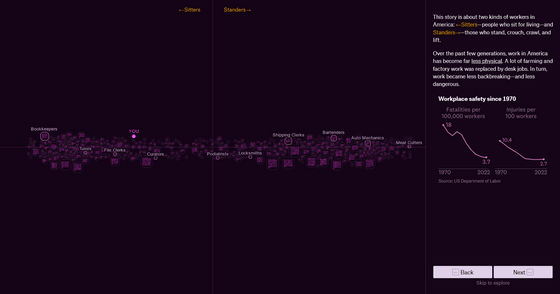
Let's start by looking at sitters. In this chart, the degree to which one can choose to stand or sit is shown on the top and bottom axes, and it shows that most sitters tend to be able to choose freely. The purple dots and the lines connecting them are the averages for sitters and standers.
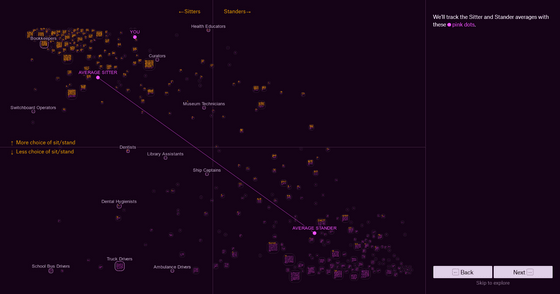
If we plot the need for a bachelor's degree up and down, we can see that sitters tend to be required to have a higher level of education.
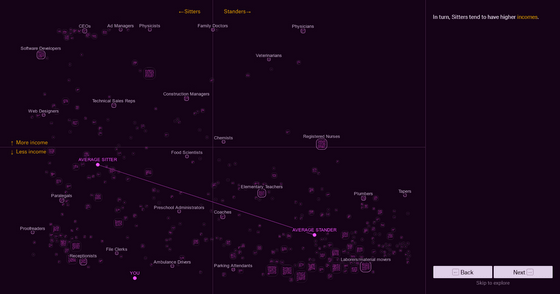
Revenues show a similar trend.
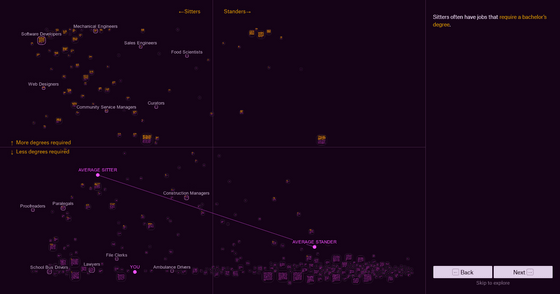
On the other hand, I also learned that sitters have to solve problems on a daily basis.
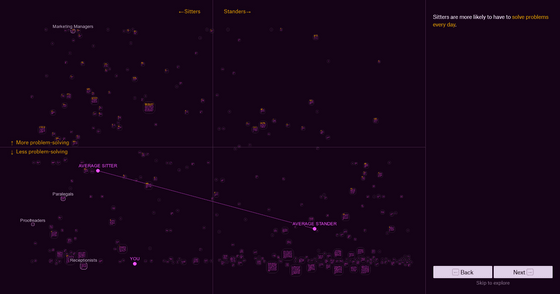
Also, sitters could pause their work at will, meaning they had a high degree of autonomy.
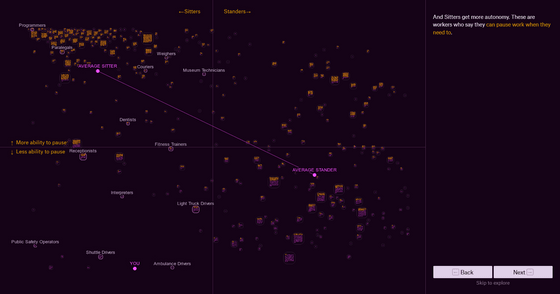
Another trend among sitters is the option to work remotely.
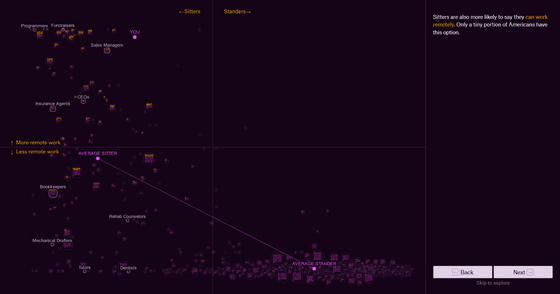
Now let's look at the standers. In contrast to sitters, standers were more likely to say that they didn't need to solve the problem much or at all.
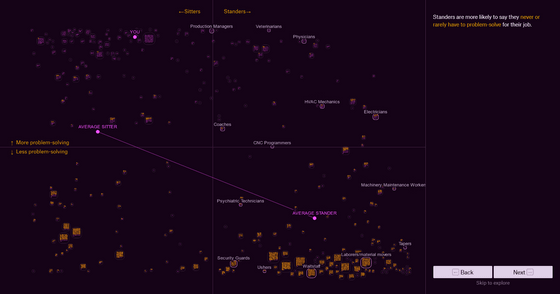
From nurses to electricians, Stander said squatting is common.
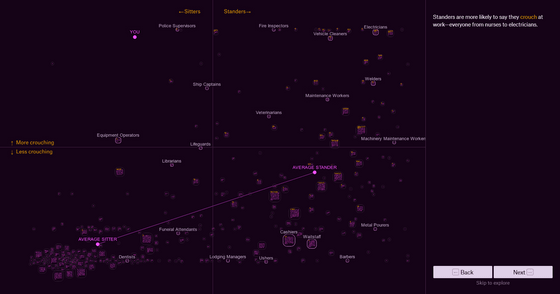
Stander responded that he often climbs ladders and ropes, which includes firefighters and cleaners.
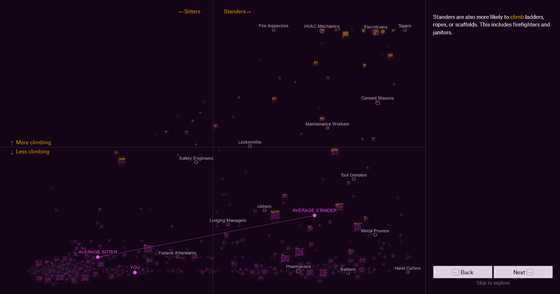
Stander was also frequently exposed to liquids, including water, sewage and bodily fluids.
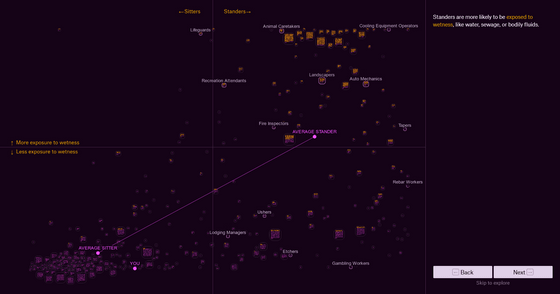
Similarly, they were prone to exposure to heat sources such as stoves and fires.
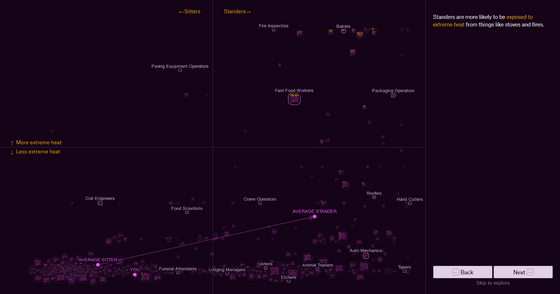
Stander also spent a lot of time outdoors, which is becoming more dangerous as global warming progresses.
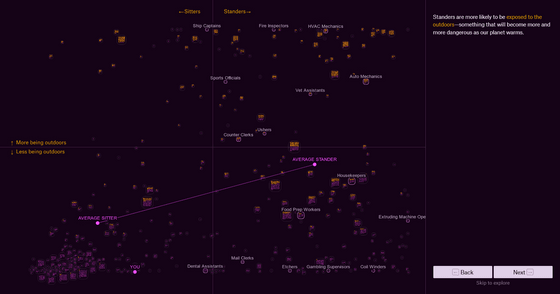
Stander also had a penchant for dangerous materials.
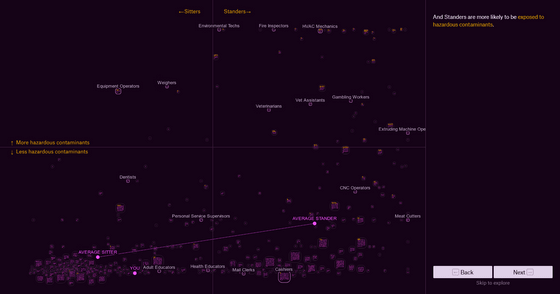
These jobs often offer little autonomy and little choice in when to take a break.
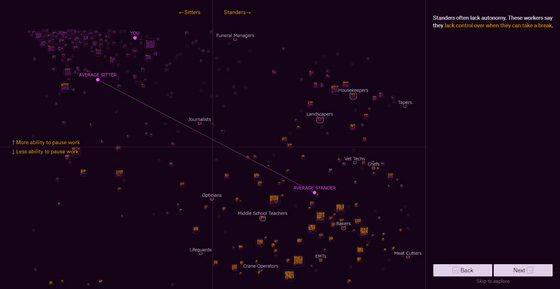
Looking at the injury rate, we can see that standard players are more likely to be injured and put more strain on their bodies.

Despite this, standers earn less than sitters.
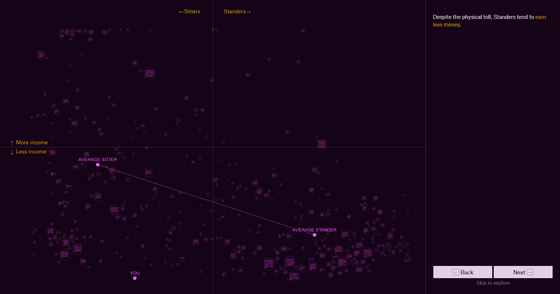
The history of American labor is one of the disadvantaged doing undesirable work, often under duress: America built its wealth on cotton harvested by enslaved black people, employed Chinese immigrants to build the transcontinental railroad, and ate the meat of animals killed and processed by black and Hispanic butchers.
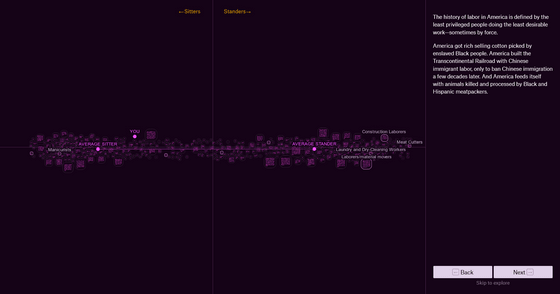
Looking at the percentage of black people, we can see that black people tend to be standardizers.
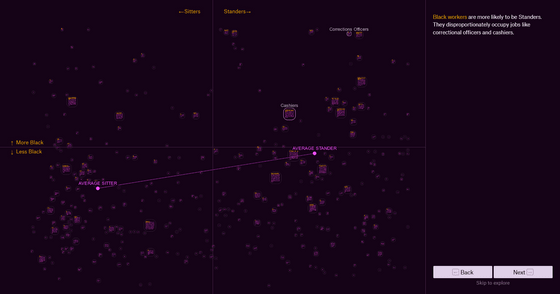
Asian workers are often found in jobs that are classified as sitters, such as software developers and manicurists.
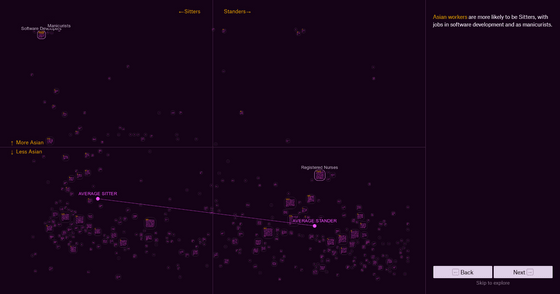
Hispanics are more likely to become stand-up workers, such as cooks, housekeepers and construction workers.
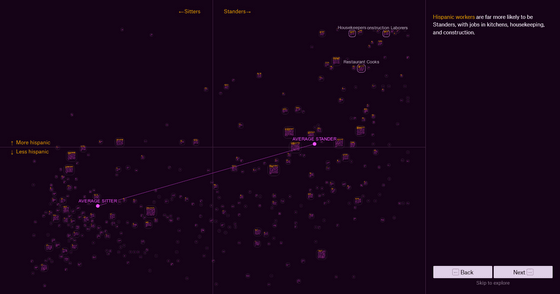
Meanwhile, the majority of sitters are white.
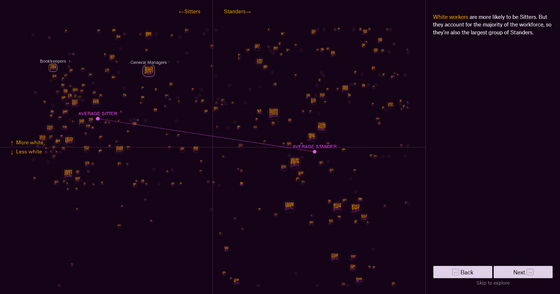
For most of American history, people worked until they couldn't work anymore. This graph shows the percentage of men over 65 who are in the workforce.
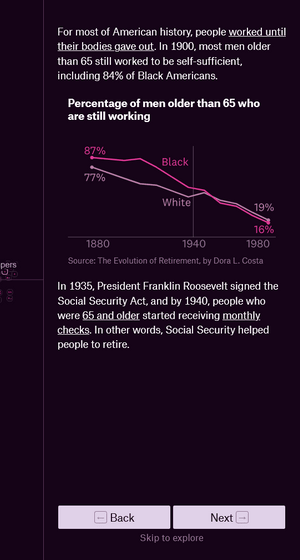
Franklin Roosevelt signed the Social Security Act in 1935, giving everyone over 65 a monthly check, which reduced the number of older people in the workforce, but the law excluded farm and domestic workers, essentially excluding non-white workers.
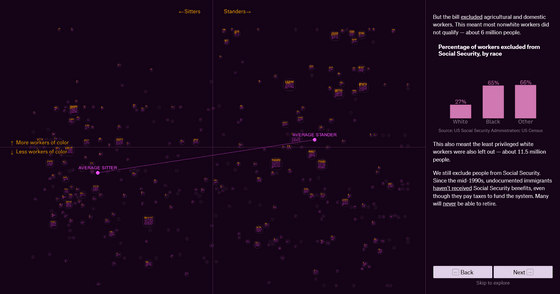
'We've often worshipped physical labor. For example, essential workers are celebrated during the pandemic, and presidential candidates often pose for photos with construction workers and farmers and say, 'I was a cashier when I was a teenager.' But we often alienate those workers with food delivery apps and home delivery apps. The message is clear: we only praise them when it's convenient,' the sitters and standers said.
There is also a video that summarises these contents.
Who Sits and Who Stands at Work? A Data Viz Story - YouTube
Related Posts:







